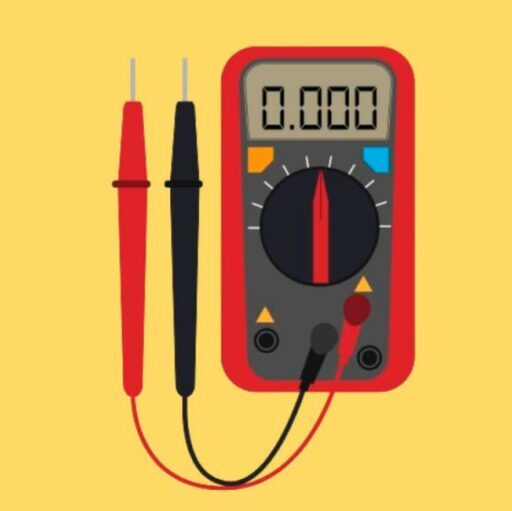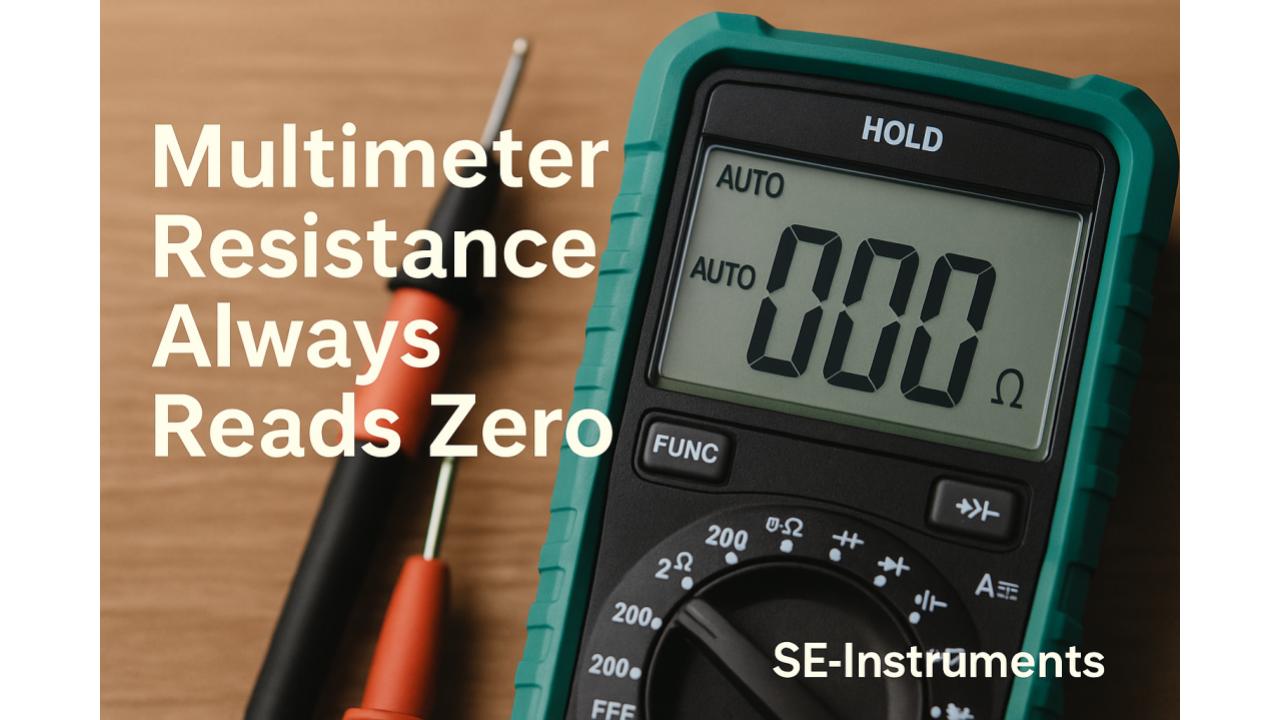🧰 Your multimeter is a vital tool for diagnosing circuits, checking components, and ensuring everything in your setup is working correctly. But what happens when your multimeter always shows zero ohms (0 Ω) — even when you expect a higher reading?
Let’s break down why this might happen, what it means, and how to troubleshoot the problem.
Table of Contents
⚠️ What Does a Zero Ohms Reading Mean?
A reading of 0 ohms means the multimeter detects no resistance — essentially a direct connection or a short circuit between the test probes.
This could be:
- Expected (when testing a wire or closed switch)
- Unexpected (when testing a resistor, open switch, or any non-zero-resistance component)
If your multimeter always shows 0 ohms, even on various components, then there’s likely a problem with how you’re measuring — or with the meter itself.
🔍 Common Causes of Constant Zero Resistance Readings
1. Shorted Component
- What happens: The component you’re testing may be internally shorted.
- Example: A shorted resistor or failed capacitor may show 0 ohms.
Fix: Try testing another known-good component to confirm.
2. Leads Touching or Shorted
- What happens: If your probe tips are touching or there’s damage to the leads, you’ll get a 0 reading.
Fix: Separate the probe tips and visually inspect your leads for shorts.
3. Test Leads Are Faulty
- What happens: A damaged test lead can create false or misleading readings.
Fix: Try swapping in a known-good pair of leads.
4. Wrong Measurement Mode
- What happens: If you’re in the continuity mode instead of resistance (ohms) mode, the reading may behave differently.
Fix: Switch to the dedicated Ω (resistance) mode on your multimeter.
5. Internal Fuse Issue
- What happens: Some meters have an internal fuse for protection. If it’s blown or bypassed incorrectly, readings may be off.
Fix: Check your multimeter’s manual and inspect the fuse if accessible.
6. Short Circuit on the Board
- What happens: If you’re testing a circuit board and get 0 ohms, there may be a shorted trace or component.
Fix: Isolate components, test off-board if possible, and inspect for solder bridges or burn marks.
7. Multimeter Malfunction
- What happens: Internal faults in the meter can also cause persistent false zero readings.
Fix: Test the meter on a known resistor (like a 1kΩ or 10kΩ resistor). If the meter still reads 0, it’s likely defective.
🧪 How to Properly Test Resistance
- Power Off the circuit or component before testing.
- Select Resistance Mode (Ω symbol).
- Connect the Probes to each end of the component.
- Check for Reading:
- A zero means low or no resistance (short).
- A high number is expected for resistors or other components.
- OL (Over Limit) means infinite resistance or an open circuit.
🛠️ Final Troubleshooting Tips
- Always verify your meter with known-good components.
- Don’t forget to zero the leads if your meter requires it (some auto-zero).
- If your meter is digital, replace the battery if readings seem off.
✅ Summary
If your multimeter is stuck on a 0 ohms reading, it could be user error, a shorted component, or an issue with the meter itself. Go through this checklist carefully — often, the fix is simple.






